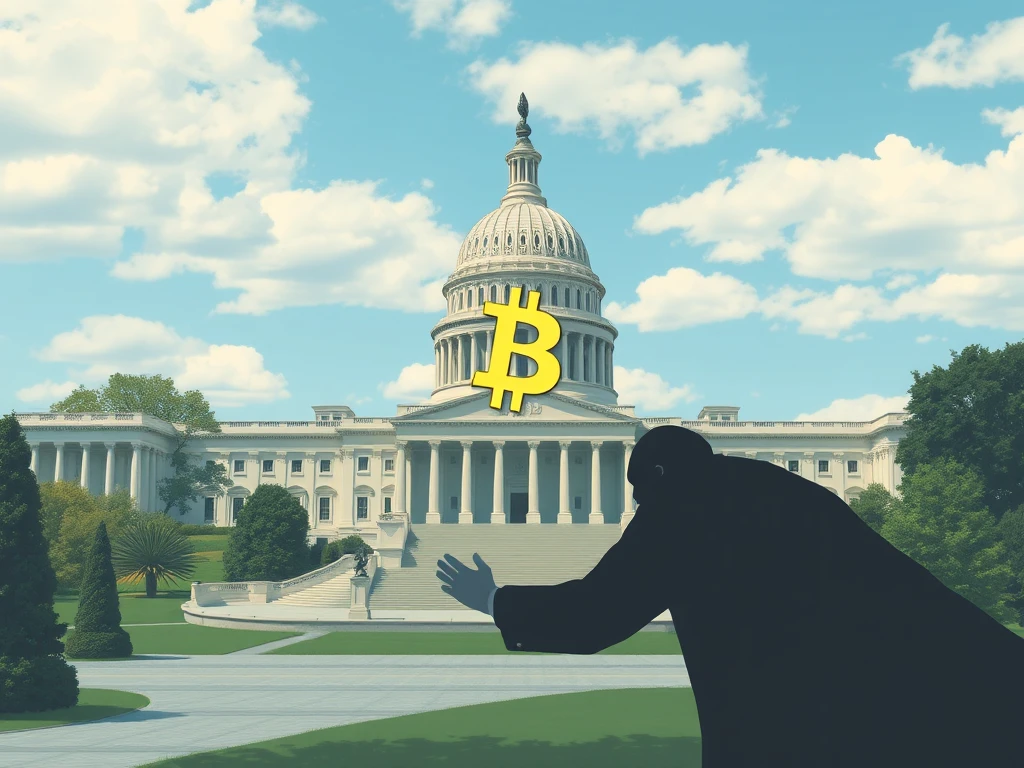Breakthrough: US Stablecoin Bill Advanced Despite Elizabeth Warren’s Opposition

A significant moment for the crypto industry has unfolded in the United States. Despite intense efforts from institutional figures, a key piece of stablecoin regulation has advanced in the US Senate. This development signals a potential shift in the regulatory landscape, challenging the narrative pushed by some powerful voices in Washington.
The GENIUS Act: A Milestone for US Stablecoin Bill
The US Senate recently advanced the GENIUS Act, a pivotal piece of legislation aimed at providing clarity and a framework for stablecoin regulation. This move is seen as a watershed moment, particularly considering the strong resistance it faced. For years, the crypto community in America has navigated uncertain regulatory waters, often feeling targeted by overly broad or technically infeasible proposals.
The advancement of this US stablecoin bill offers a glimpse of a more structured approach to integrating stablecoins into the financial system. It acknowledges the growing importance of these digital assets and the need for clear rules, rather than attempting to stifle innovation through regulation by enforcement or impractical requirements.
Elizabeth Warren’s Stance on Crypto Regulation US
Senator Elizabeth Warren has been a vocal critic of the cryptocurrency space, often advocating for stringent regulations. Her campaign against crypto is well-documented, ranging from public statements to legislative efforts. She has expressed concerns about consumer protection, illicit finance, and the potential risks stablecoins could pose to financial stability.
In the context of the GENIUS Act, Senator Elizabeth Warren crypto opposition was particularly evident. She reportedly introduced numerous amendments aimed at altering or halting the bill. These actions highlight the deep divide in regulatory philosophy between certain institutional figures and those advocating for a more permissive environment for digital assets.
Institutional Resistance and the DeFi Broker Rule Precedent
The opposition to the US stablecoin bill echoes previous regulatory battles. A notable example is the infamous “DeFi Broker Rule” included in the 2021 Infrastructure Investment and Jobs Act. This provision initially imposed what many saw as an impossible requirement: decentralized protocols and node operators having to collect identifying information for every wallet holder.
This rule, widely criticized for its technical infeasibility, was seen by many as a deliberate attempt to hinder the growth of decentralized finance. While its scope was later narrowed and ultimately faded, it set a precedent for regulatory overreach that the crypto industry views with caution. The pushback against the GENIUS Act, particularly amendments demanding stablecoin issuers monitor *all* downstream transactions, felt eerily similar in its impracticality and potential to cripple legitimate activity under the guise of combating illicit use.
Why Did Institutional Efforts Against Stablecoin Regulation Fail?
Despite the significant influence wielded by opponents like Senator Warren, their efforts to kill the stablecoin regulation bill ultimately fell short. Several factors likely contributed to this outcome:
- Bipartisan Support: The GENIUS Act garnered bipartisan support in the Senate Banking Committee, indicating a broader recognition of the need for sensible stablecoin rules.
- Technical Realism: Some proposed amendments, like requiring issuers to monitor all future transactions, were technically impractical and likely failed to gain traction due to their absurdity, similar to the original DeFi Broker Rule issues.
- Focus on Dollar Hegemony: Proponents, including some Democrats, emphasized the importance of promoting dollar-denominated stablecoins to maintain the dollar’s global standing, a goal that aligns with national interests and countered arguments focused solely on risk.
- Exposure of Motives: Critics argue that some institutional opposition inadvertently exposes a desire to protect traditional financial institutions from agile, crypto-native competitors who thrive under less burdensome regulatory environments. Big banks, often cited as beneficiaries of heavy-handed crypto rules, face less disruption when smaller players are stifled.
The failure to halt the bill suggests that a more pragmatic approach to crypto regulation US is gaining ground, one that balances concerns about risk with the potential benefits of stablecoins and the need for innovation.
Implications for the Future of Crypto Regulation US
The advancement of the GENIUS Act marks a significant step forward for crypto regulation US. While the legislative process is far from over, this development signals that comprehensive stablecoin legislation is a serious possibility. It suggests that the most extreme forms of regulatory opposition may be losing their grip, paving the way for more nuanced and technically informed rules.
This doesn’t mean the fight is over. Discussions around consumer protection, financial stability, and illicit finance will continue. However, the ability of the US stablecoin bill to move forward despite powerful opposition is a positive sign for the industry, suggesting a potential path towards clearer rules that could foster innovation and adoption rather than hinder it.
Conclusion: A Step Forward Despite the Opposition
The US Senate’s advancement of the GENIUS Act is a notable victory for proponents of clear stablecoin regulation and a setback for those who sought to block such legislation entirely. The relentless campaign from figures like Elizabeth Warren failed to derail the bill, exposing the limitations of purely oppositional tactics.
This moment is more than just a legislative update; it’s a testament to the growing recognition of stablecoins within the US financial dialogue. While challenges remain and the final shape of crypto regulation US is yet to be determined, the progress of the US stablecoin bill represents a crucial step towards a more predictable and potentially more favorable regulatory environment for digital assets.









